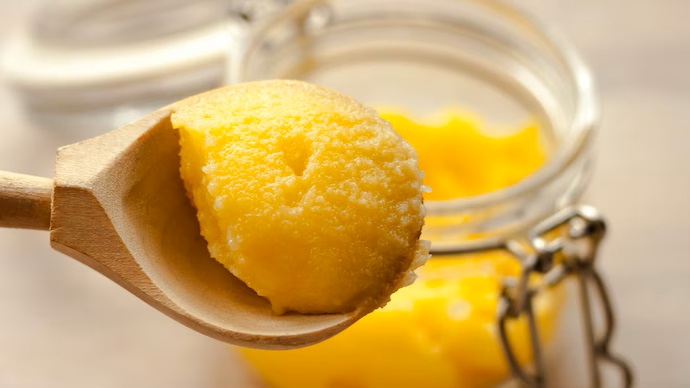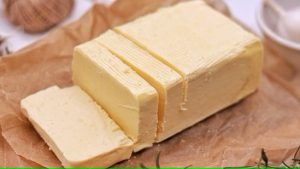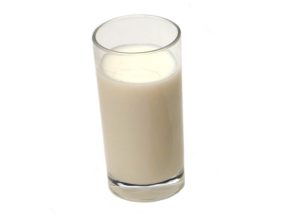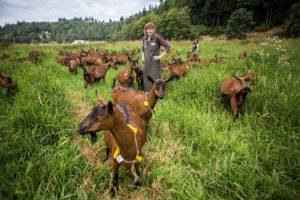Every festive season, adulterated food products, including ghee, flood India. Dairy giant Amul has issued a public warning about counterfeit ghee circulating in the market. This is why food adulterers love ghee.
In November 2023, Delhi Police busted a factory in Dwarka that manufactured ‘spurious ghee’ and sold it in containers with labels of brands such as Patanjali, Mother Dairy and Amul. Exactly a year ago, in 2022, Gujarat Police raided a fake ghee factory in Rajkot for selling a spurious concoction of pure ghee, palm oil and vegetable fat labelled as pure cow ghee on e-commerce platforms.
For most parts of India, pre-winter is the time of festivals, which means sweets! And those sweets need lots of ghee, for that perfect aroma and taste.
As the festive season (October-November) draws near, markets come alive with sweets and snacks, where the ones made of desi ghee are sought after. But behind the scenes, there’s a darker story that is stirring. A flood of adulterated food products hits the shelves, and the worst-hit are milk and its derivatives — butter, khoa, paneer, and ghee.
Months after the Tirupai prasadam row blew up in Andhra Pradesh and put ghee adulteration in the spotlight, an India Today SIT investigation uncovered an adulteration racket in Hathras, where adulterers were offered ‘ghee’ Rs 240 per kilogram, while real ghee goes for Rs 600 to Rs 800. It was an unhealthy mix of hydrogenated vegetable oil, refined oil, and artificial fragrance.
So, why do food adulterers have such a keen interest in ghee? Maybe it’s the tag, ‘liquid gold’.
AMUL REACTS AFTER INDIA TODAY’S INVESTIGATION UNCOVERS FAKE GHEE RACKET
The India Today Special Investigation Team (SIT), posing as Delhi shopkeepers looking for bulk ghee ahead of the festive rush, took a trip to Hathras, a major ghee-manufacturing hub in Uttar Pradesh. What they found was more scam than celebration. They were offered a concoction of hydrogenated vegetable oil, refined oil, and artificial fragrance, that would make the concoction resemble ghee.
According to the Food Safety and Standards Authority of India (FSSAI), ghee is a pure-clarified fat derived solely from milk, curd, desi (cooking) butter, or cream, to which no colouring matter or preservative has been added.
The so-called “desi ghee”, which typically sells for Rs 600 to Rs 800 per kilogram, was being offered at just Rs 240 per kilogram to the India Today SIT by adulterators in Hathras.
After the expose of the fake ghee being offered for sale in duplicate Amul cartons, the dairy major issued an advisory alerting consumers of fake ghee circulating in the market. The one-litre refill pack, which Amul discontinued three years ago, was being sold by some dishonest distributors, according to Amul Managing Director Jayen Mehta.
The high-profile case of alleged ghee adulteration in the laddu prasadams at Tirumala Tirupati Shrine, claimed to involve animal fat, shook India last month. The investigation into the Tirumala ghee was paused by the Supreme Court. However, it put the spotlight on the industry of fake and adulterated ghee.
So, why do food adulterers have such a keen interest in ghee?
THE LURE OF HIGH PROFITS DRIVES FAKE GHEE
The answer lies in the lucrative profits that can be made by cutting corners with cheap substitutes. Ghee is a staple in many Indian households, particularly during festive seasons when its demand surges.
The price of ghee in the market varies significantly, ranging from Rs 300 to Rs 1,000 per kg, depending on its purity. These days, some A2 ghee even sells for up to Rs 3,000 a kg.

Adulterers capitalise on this by mixing ghee with less expensive oils and fats, thereby maximising their margins. By adding refined vegetable oil, palm oil, or other cheaper alternatives, adulterers reduce their production costs.
The economic incentive, which is normally substantial, multiplies due to economics of scale. During the festival shopping spree, people often overlook whether the ghee has FSSAI certification.
Adulteration not only increases their profit margins but also allows them to flood the market with cheaper, albeit substandard, products.
As of 2023, the ghee industry in India is worth Rs 3.2 lakh crore, and is predicted to shoot up to Rs 6.9 lakh crore by 2032, according to a study by market research firm IMARC Group.
The emergence of customised ghee segments, such as A2 ghee, aided by rising health consciousness and the rapidly expanding e-commerce sector, has pumped the numbers of the ghee industry, says the India’s Ghee Market Report 2024 by IMARC Group.
The massive demand provides ample opportunity for fraudsters like the ones in Hathras to exploit consumers, in turn, making huge profits in the process.
Consumers, often unaware of the adulteration, purchase these fake or adulterated ghee due to their lower prices. The consequences of which are severe that these adulterers overlook, putting public lives in danger. Consumers, too, at times, overlook the consequences.
It is the profit margin that has got the food adulterators to dip all five fingers in ghee, especially during the festive period.
You can now read the most important #news on #eDairyNews #Whatsapp channels!!!
🇮🇳 eDairy News ÍNDIA: https://whatsapp.com/channel/0029VaPidCcGpLHImBQk6x1F













